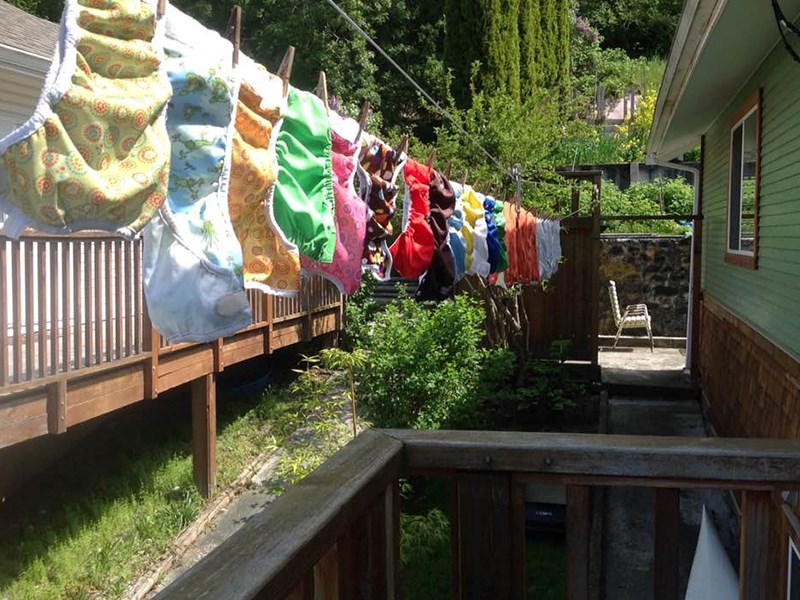By the time we were three years old, most of us had gone through about 7,000 diaper changes. As we age, situations can arise that require coverage in our adult years.
Since its invention in the 1950s, the traditional plastic-laden diaper has been accumulating in our trash. Plastic does not break down, so every diaper ever buried still exists in one form or another.
Even diapers labelled compostable or biodegradable rarely break down into food for the soil; this would require oxygen, but landfills are anaerobic and much better at preserving trash than breaking it down.
Despite their convenience and reduced “ick” factor, traditional diapers are not the most common option in many places around the world. In fact, the idea of leaving human waste near our skin is a strange concept in many cultures. Instead, babies’ habits are keenly observed and they are held over a potty or the ground when they are about to go.
Caregivers everywhere are now adopting this method and adding cues such as a whistle to help trigger elimination. While this method requires a lot of focus and time at first, some say there is less potty training later on. It is, without a doubt, the most eco-friendly choice out there.
If this sounds daunting, there are a few other green alternatives gaining popularity with even the busiest of caregivers. Remember those cloth diapers you heard your grandparents talk about? Well they’re back, and improved.
Safety pins have been replaced with easy snappies, for one. The two main variations include:
· The hybrid diaper. Breathable and washable shells with a disposable absorbent insert. Inserts are landfilled or flushed.
· Cloth diapers. Similar exterior reusable shell, but with washable cloth inserts. A washing hose can be spliced into toilet plumbing, so waste can be rinsed and flushed.
Washable diapers are still resource heavy when it comes to energy consumption, especially if using a dryer, so it is great to take advantage of drying them on a rack or outside when possible. There are some major perks, though. With breathability, comes less diaper rash and reusability means cost savings in the long run.
Another step toward greening your little one can be taken by making or buying washable baby wipes. Store these simple terry cloth baby wipes in a wiper warmer for added baby comfort. Putting a little witch hazel and baby-body wash in the water they are soaked in keeps everything fresh.
For more information or to share ideas on raising zero-waste toddlers, drop by the Let's Talk Trash booth at the Ages and Stages event at Powell River Recreation Complex on Friday, May 25.
Let’s Talk Trash is Powell River Regional District’s waste-reduction education program. Find out more at [email protected].



